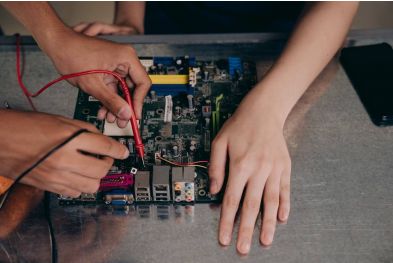How to Recover a PC That Won’t Boot into Windows
It’s a frustrating situation: you press the power button on your PC, but instead of loading into Windows, you’re greeted with a black screen, an error message, or an endless loop of reboots. Don’t panic! In this guide, we’ll walk you through the steps to diagnose and fix a PC that won’t boot into Windows.
Step 1: Check the Basics
Before diving into complex solutions, start with the basics:
Power Supply: Ensure your PC is properly plugged in and the power outlet is working.
Peripherals: Disconnect all external devices (USB drives, printers, etc.) except for the keyboard, mouse, and monitor.
Hardware Connections: Open your PC case (if comfortable) and check that all cables, RAM, and hardware components are securely connected.
Step 2: Boot into Safe Mode
If your PC is stuck in a boot loop or crashes during startup, try booting into Safe Mode:
Restart your PC and repeatedly press the F8 or Shift + F8 key (depending on your system) before Windows starts loading.
Select Safe Mode from the Advanced Boot Options menu.
Once in Safe Mode, you can troubleshoot issues like driver conflicts or software problems.
Step 3: Use Windows Recovery Environment (WinRE)
If Safe Mode doesn’t work, access the Windows Recovery Environment:
Restart your PC and press the appropriate key (usually F11, F12, or Esc) to enter the boot menu.
Select Troubleshoot>Advanced Options.
Here, you can try:
Startup Repair: Automatically fixes common boot issues.
System Restore: Reverts your PC to a previous working state.
Command Prompt: For advanced users to manually repair the bootloader or check disk errors.
Step 4: Check for Hardware Issues
If software fixes don’t work, the problem might be hardware-related:
Test the RAM: Use a tool like MemTest86 to check for faulty memory.
Check the Hard Drive: Run a diagnostic tool (provided by your hard drive manufacturer) to ensure the drive isn’t failing.
Inspect the Power Supply: A failing PSU can prevent your PC from booting.
Step 5: Reinstall Windows (Last Resort)
If all else fails, you may need to reinstall Windows:
Create a bootable USB drive with the Windows Media Creation Tool.
Boot from the USB drive and follow the on-screen instructions to reinstall Windows.
Remember to back up your data before proceeding, as this will erase your files.
Final Thoughts
A PC that won’t boot into Windows can be stressful, but with the right steps, you can often recover it without professional help. Start with the basics, use Safe Mode or WinRE for software fixes, and check hardware if necessary. If you’re still stuck, don’t hesitate to seek expert assistance.
Did you find this guide helpful? Share it with your friends on social media to help others facing the same issue!
By following these steps, you’ll not only save time but also potentially avoid costly repairs. Remember, sharing knowledge is caring—spread the word and help others troubleshoot their PCs!







